This post may contain affiliate links. If you make a purchase through a link, I may receive a small commission, at no cost to you. These commissions help keep this website up and running, and I thank you for your support. Read my full disclosure here.

Rick Steves Ireland
by Rick Steves, Pat O’Connor
Richard ‘Rick’ Steves is an American author and television personality who focuses on European travel. Rick really knows his stuff. He has spent 100 days out of every year exploring Europe since 1973! His guidebooks are written for an American audience, yet over the years, his popularity has increased and he now draws an international following. Rick Steves Ireland provides candid and humorous advice that covers everything from what to see to recommendations on accommodation and restaurants. Fans enjoy his Irish travel book over others because of his entertaining and informative narrative.
Pros:
- Available in paperback and ebook formats.
- Enjoyable read and delivers great narrative.
- Provides recommendations about how to spend your time in Ireland.
- Comes with a decent map with estimated drive times (especially handy if your GPS fails you).
- Provides lots of great tips about driving, what to pack, and where to eat and stay.
- Provides some interesting historical information.
- Paperback size is more travel friendly than some of the larger, heavier Irish guides.
Cons:
- The popular and stunning Wild Atlantic Way is not well covered.
- Focuses on the mainstream popular tourist locations and provides limited coverage on other cities and towns such as Cork and Limerick.
- Those who prefer their information in a more precise and succinct format may find it too wordy.
Recommended for:
Those who love both a good read and a guidebook all in one. Especially popular with Americans and the mature traveller.
Fodor’s Ireland
by Fodor’s
Fodor’s was founded over 80 years ago by Eugene Fodor, a traveller keen to create a more entertaining guidebook than what was available at the time. Fodor now hires local writers to provide knowledgeable travel information to its readers. Fodor Ireland travel guide is not only informative, but is also visually appealing as it provides plenty of beautiful full colour images to enjoy and inspire you when planning your Irish travel.
Pros:
- Available in both paperback and ebook formats.
- Full colour guide provides lots of stunning images to inspire your Irish travel.
- Offers good advice on what to see, accommodation, and restaurants.
- Offers recommendations on different sites and offers a different point of view from Rick Steves’ guide.
- Well laid out and easy format to read and navigate.
- Detachable map.
Cons:
- The full colour version will be lost on those viewing the ebook on a black and white reading device.
- A little on the dry side if you prefer a more entertaining read.
- The full colour guide makes for a heavy book, so I suggest leaving the paperback behind and travelling with the ebook version.
Recommended for:
Those who like their travel guide to be more factual and succinct, and those that enjoy a more visually pleasing travel book with lots of photos to inspire them.
Lonely Planet Ireland
by Lonely Planet, Fionn Davenport, Damian Harper, Catherine Le Nevez, Ryan Ver Berkmoes, Neil Wilson
Lonely Planet is the largest travel guidebook publisher in the world. Lonely Planet books originally started as a guide for budget/backpacker travellers, however these days the guides are written for a wider audience and are now popular with travellers of all ages and budgets. This Lonely Planet guide to Ireland provides detailed coverage on a wide range of Irish towns and cities in a basic and concise format.
Pros:
- Available in both paperback and ebook formats.
- Covers smaller Irish towns and cities that other guides don’t.
- Provides good insider tips
- Provides good restaurant and accommodation recommendations for a range of budgets.
- Includes a pull out map of Dublin.
- Thin pages mean that the guide packs in more information for its size.
- Provides concise information on a broad range of areas.
- Provides lots of practical advice.
Cons:
- Those taking a short trip to Ireland may find this guide too detailed and long.
- Not as engaging as other guidebooks.
- Some people may not like the thin paper and find it of inferior print quality.
- The information is generally brief, so if you are planning to explore a particular area, you may want to get another guide that provides you with more detailed information on that area.
Recommended for:
Those that are planning an extensive trip around Ireland and those who like a concise guidebook without the glossy photos and stories.
Frommer’s Ireland
by Jack Jewers
The Frommer’s travel guides were originally created by Arthur Frommer in the 1970’s. He sold his company to Google in 2012, but purchased it back from them in 2013 after they decided to stop manufacturing it. This Irish Frommer’s guide was written by journalist Jack Jewers, who has carefully and thoroughly researched the information in this Irish travel guide.
Pros:
- Available in both paperback and ebook formats.
- Provides a good overview of the highlights and top attractions in Ireland.
- Provides lots of full colour images to inspire your Irish travel.
- Provides advice on the best accommodation and restaurants for all budgets.
- Provides advice on the best attractions to see and which to skip.
Cons:
- Doesn’t provide the detailed information that other guides provide, so it may not be detailed enough for some readers.
Recommended for:
Those on a guided tour and those who may prefer a travel guide that provides the highlights of Ireland, rather than detailed information.
The Rough Guide to Ireland
by Paul Gray
Similar to Lonely Planet, The Rough Guide Ireland provides travellers with a detailed travel guide in a basic format. These books are popular with travellers, especially backpackers. This Rough Guide to Ireland provides concise, in-depth historical information as well as detailed coverage of a wide range of Irish towns and cities in a basic format.
Pros:
- Available in both paperback and ebook formats.
- Concise information on a broad range of areas.
- In depth historical and sightseeing information tends
- Provides lots of practical advice.
- Pull out map.
Cons:
- These books are not updated annually, so sometimes the information can be a bit out of date.
Recommended for:
Backpackers and those planning an extensive trip around Ireland. Popular with those who like a detailed guide that includes historical information. Suits travellers who prefer a basic book without all the heavy glossy pages to carry.
DK Eyewitness Travel Guide Ireland
by DK
This DK Eyewitness Ireland guide is a pleasure to read with its beautiful glossy photos. This guide is enjoyed by people of all ages and provides detailed information on all of the key sites in Ireland as well as providing a range of facts about Ireland’s history and heritage.
Pros:
- Full colour glossy pages.
- Provides detailed information on key sites including detailed drawings and images.
- Content is well organised.
- Provides a good variety of information on Irish culture, heritage, and history.
- Provides guided walking tours.
- Provides lots of maps.
Cons:
- The full colour glossy pages make the book heavy and not very travel friendly.
- Not as extensive as other guidebooks.
- Less detailed travel information than other guides, such as Lonely Planet.
Recommended for:
Those that enjoy a more visually pleasing travel book with lots glossy photos compared to the simpler format of the Lonely Planet and Rough Guide. Those looking for more than just a basic travel guide and interested in learning more about Irish culture, heritage, and history.
- If you are trying to travel light, choose a book with an ebook version.
- If you are only planning on travelling to Dublin, then consider purchasing a travel guide devoted to Dublin such as Lonely Planets Dublin and Rick Steves Snapshot Dublin.


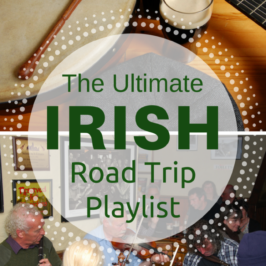
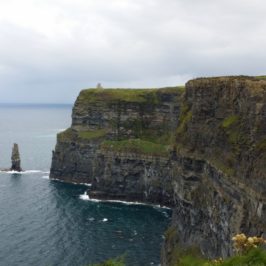
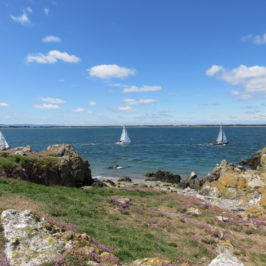
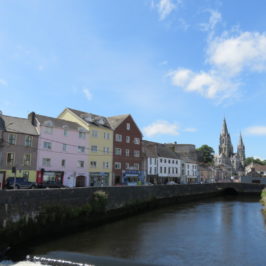
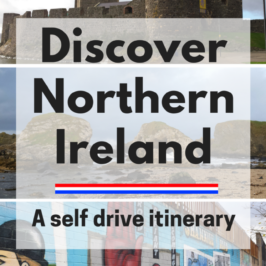
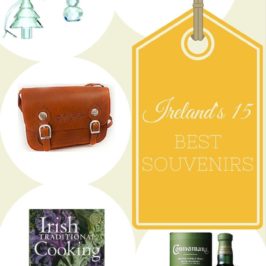
Leave a Reply